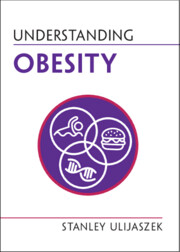313 results
Chapter 20 - Culinary Longings
- from Part III - Cultural Transfers
-
-
- Book:
- Europe in British Literature and Culture
- Print publication:
- 13 June 2024, pp 322-336
-
- Chapter
- Export citation
4 - Black Markets, Green Expeditions
-
- Book:
- Streetscapes of War and Revolution
- Published online:
- 30 May 2024
- Print publication:
- 06 June 2024, pp 156-206
-
- Chapter
- Export citation
Chapter 43 - Food
- from Part VI - Social and Intellectual Topics
-
-
- Book:
- Jonathan Swift in Context
- Published online:
- 02 May 2024
- Print publication:
- 09 May 2024, pp 343-349
-
- Chapter
- Export citation
Parent-reported offering of allergen foods to infants during complementary feeding: an observational study
-
- Journal:
- Proceedings of the Nutrition Society / Volume 83 / Issue OCE1 / April 2024
- Published online by Cambridge University Press:
- 07 May 2024, E151
-
- Article
-
- You have access
- Export citation
Fast tracking tool selection for sustainability decisions
-
- Journal:
- Global Sustainability / Volume 7 / 2024
- Published online by Cambridge University Press:
- 30 April 2024, e24
-
- Article
-
- You have access
- Open access
- HTML
- Export citation
Chapter 8 - Promoting Healthy Behaviors and Communities through Food, Nutrition, and Health Extension Efforts
- from Part II - Addressing Key Issues in the Well-Being of Children, Youth, and Families
-
-
- Book:
- Extension Education and the Social Sciences
- Published online:
- 28 March 2024
- Print publication:
- 04 April 2024, pp 166-184
-
- Chapter
- Export citation
3 - Abundance
-
- Book:
- China's Age of Abundance
- Published online:
- 28 March 2024
- Print publication:
- 04 April 2024, pp 58-101
-
- Chapter
- Export citation
“Yugoslavia has Nothing. Yugoslavia has No Bread. But Hungary Gives Us Bread”: Access to Food and (Dis)loyalty in a “Redeemed” Yugoslav Borderland
-
- Journal:
- Austrian History Yearbook , First View
- Published online by Cambridge University Press:
- 08 March 2024, pp. 1-15
-
- Article
- Export citation
6 - Food and nutrition
- from Part 2 - Dimensions of health and wellbeing
-
-
- Book:
- Health and Wellbeing in Childhood
- Published online:
- 08 March 2024
- Print publication:
- 04 March 2024, pp 90-106
-
- Chapter
- Export citation
Assessment of Nutritional Composition of Turkish Red Crescent Menus After the M7.8 and M7.6 Earthquakes in Kahramanmaraş, Türkiye
-
- Journal:
- Disaster Medicine and Public Health Preparedness / Volume 18 / 2024
- Published online by Cambridge University Press:
- 12 February 2024, e20
-
- Article
- Export citation
II.48 - Royal and Ecclesiastical Accounts
- from Fifteenth Century
-
- Book:
- The Cambridge Anthology of British Medieval Latin
- Published online:
- 11 January 2024
- Print publication:
- 01 February 2024, pp 459-473
-
- Chapter
- Export citation
4 - I Blame the Food Corporations
-
- Book:
- Understanding Obesity
- Published online:
- 04 January 2024
- Print publication:
- 25 January 2024, pp 53-71
-
- Chapter
- Export citation
7 - You Eat Too Much
-
- Book:
- Understanding Obesity
- Published online:
- 04 January 2024
- Print publication:
- 25 January 2024, pp 103-119
-
- Chapter
- Export citation
2 - It’s My Genes
-
- Book:
- Understanding Obesity
- Published online:
- 04 January 2024
- Print publication:
- 25 January 2024, pp 17-31
-
- Chapter
- Export citation
Chapter 1 - Guts, Hollows, and Coils
- from Part I - Origins: Histories
-
-
- Book:
- Literature and Medicine
- Published online:
- 17 January 2024
- Print publication:
- 18 January 2024, pp 21-38
-
- Chapter
- Export citation
Food provision to support improved nutrition and well-being of people experiencing disadvantage – perspectives of service providers
-
- Journal:
- Public Health Nutrition / Volume 27 / Issue 1 / 2024
- Published online by Cambridge University Press:
- 15 January 2024, e36
-
- Article
-
- You have access
- Open access
- HTML
- Export citation

Understanding Obesity
-
- Published online:
- 04 January 2024
- Print publication:
- 25 January 2024
7 - Food Insecurity
-
- Book:
- The Russia Sanctions
- Published online:
- 14 December 2023
- Print publication:
- 21 December 2023, pp 79-87
-
- Chapter
- Export citation
La despensa nacional: Quinoa and the Spatial Contradictions of Peru’s Gastronomic Revolution
-
- Journal:
- Latin American Research Review / Volume 59 / Issue 1 / March 2024
- Published online by Cambridge University Press:
- 11 December 2023, pp. 84-104
-
- Article
-
- You have access
- Open access
- HTML
- Export citation
Testing a conceptual Hierarchy of Effects model of food marketing exposure and associations with children and adolescents’ diet-related outcomes
- Part of
-
- Journal:
- Public Health Nutrition / Volume 27 / Issue 1 / 2024
- Published online by Cambridge University Press:
- 07 December 2023, e10
-
- Article
-
- You have access
- Open access
- HTML
- Export citation



